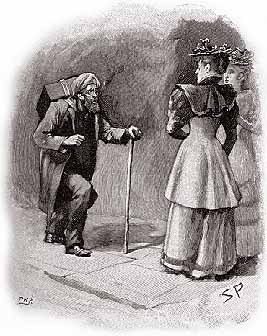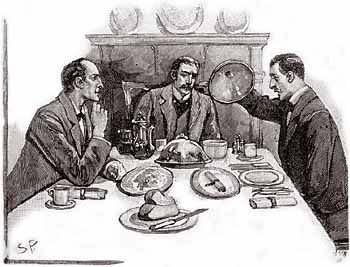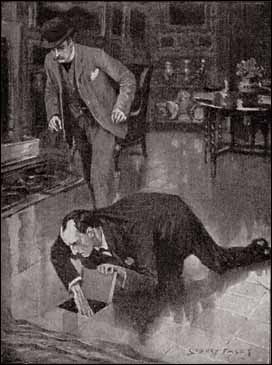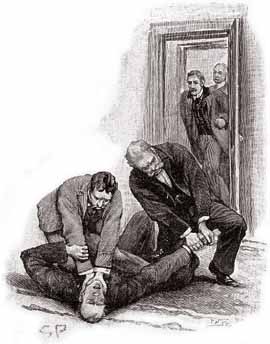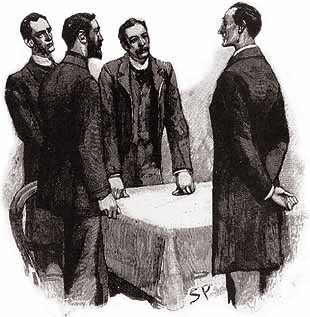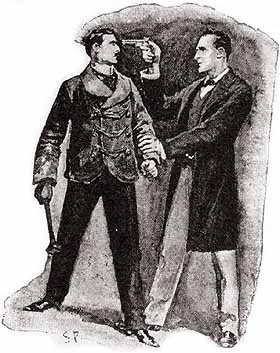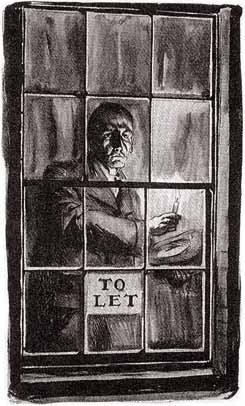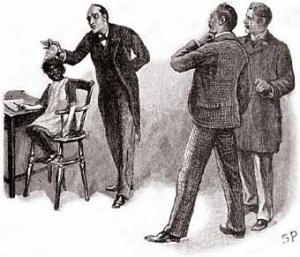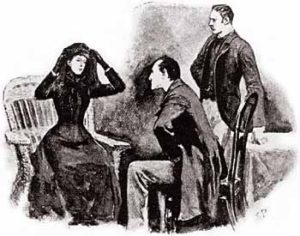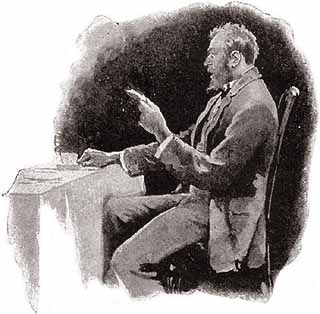
I have fallen behind in the Chronological Sherlock Holmes Challenge. I was to read “The Five Orange Pips” the week of April 9-15.
“The Five Orange Pips” probably needs little introduction, as it’s one of the more well-known (and best) Sherlock Holmes stories.
Holmes is visited by a young man named John Openshaw who has a most curious case for Holmes. He recounts the story of first his uncle then his father dying in mysterious accidents after receiving envelopes enclosing five orange pips and the initials KKK. Both deaths indicated no signs of violence or injury, but John Openshaw feels sure they were not mere accidents. John Openshaw himself has just received five orange pips and a note inscribed KKK, and Holmes urges him to act quickly, as he fears for his client’s life.
This story is a tight narrative. The case is an intriguing one, and the story itself has a nice example of Holmesian deduction that doesn’t feel like a cheat and yet still manages to stay a step or two ahead of the reader (though most readers today will more readily understand the reference to the KKK than readers in Conan Doyle’s day might have). I feel that I read somewhere, and I am afraid I can’t remember where, that the KKK never made use of the five orange pips as a warning device, but it does make for a great plot point in the story, and it’s an example of a device that doesn’t need to be true to work. Oranges would, of course, be common in Florida, where Elias Openshaw lived and owned a plantation for a time. This story is one of the first fictional references to the KKK, an organization which, when Doyle wrote about it, would seem to be in decline, but which, as we now know, had a resurgence in the 1920s and which is still with us today.
Once again, I find myself disagreeing with the chronology here. There are clear references to The Sign of Four, which hasn’t come up yet in the reading challenge, which is based on this chronology. I realize the effort involved in creating an accurate chronology for these stories, but I really can’t understand how so many stories in this chronology are placed before The Sign of Four with all the clear references to it in just the last several alone.
In any case, this story has been referenced in the BBC Sherlock series in a couple of fun ways. First, in the episode “The Great Game,” an assassin sends five pips, as in electronic beeps, as a warning signal. Second, in “The Abominable Bride,” a murder victim receives five orange pips in the mail before he is killed. Also, an organization similar to the KKK is featured in that episode, which was a one-off set in the Victorian era when the original Holmes stories took place.
Rating:




 I read this story as part of the Chronological Sherlock Holmes Challenge. It is the thirteenth story in the chronology (time setting rather than composition). Next up is “The Noble Bachelor.”
I read this story as part of the Chronological Sherlock Holmes Challenge. It is the thirteenth story in the chronology (time setting rather than composition). Next up is “The Noble Bachelor.”
